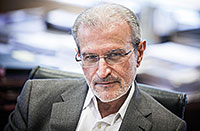|
Hunc igitur terrorem animi tenebrasque necessest […] Titus Lucretius Carus. I always found these verses by Lucretius following his praise of Epicurus, «honour of the Greeks», to be one of the most beautiful metaphors of science as a virtue to reach ataraxia, the state of mind of wisdom. That desire was undoubtedly in the heart of «El somni de Lucreci», and has been the backbone of scientific thought until today, as pointed out in the remarkable essay by the director of Mètode, Martí Domínguez. The University of Valencia has always been adamant about its dedication to science. Since its inception, more than five centuries ago, centres such as the School of Medicine introduced the new concepts of human anatomy by Vesalius, and also practical knowledge of the natural world, specially of therapeutic herbs. In fact, the need for usable land to cultivate medicinal herbs promoted the creation of one of the first university gardens. Over time, and after several relocations, those gardens constituted the origin of today’s Botanical Garden. The old University was also a centre for humanism and tolerance. Figures such as the surgeon Lluís Alcanyís, persecuted and finally burned by the Spanish Inquisition, the paracelsist Llorenç Coçar and Luis Vives, true forefather of social science, studied or transmitted their knowledge in those lecture halls. In addition, botanists like Joan Plaça or Antonio José Cavanilles, the scholar Gregorio Mayans, the mathematician and astronomer Jerónimo Muñoz and the cosmographer of the Indies Bautista Muñoz or, more recently, Santiago Ramón y Cajal contributed to spread scientific knowledge from the University of Valencia. In 1909, the Medical-Scholar Academy, an association of medicine students of the University, organised a homage to Charles Darwin to celebrate the centenary of his birth. It was the only academic recognition of the occasion in the country. The ceremony, attended by Miguel de Unamuno, rector of the University of Salamanca at the time, was attacked by the most radically conservative press. For instance, La Semana Católica branded the event as a «homage to the devil». The astronomical observatory was also created in 1909. It would later occupy the present day Rectorate, and was finally moved to its current location, where it combines research and science communication. The creation of the OTRI and the Scientific Park fulfilled all the potential of the University and connected it with the technological and innovation needs of society in the so-called third generation universities. The different centres set up in our spaces, belonging to the University or CSIC, clearly show a commitment to scientific progress and the transfer of knowledge. Moreover, the many innovative companies created in recent years prove the need to keep generating synergies between the academy and initiatives for improving business productivity. Indeed, current RTD cannot be understood outside a collaborative context. VLC/Campus is a joint project of the University of Valencia, the Polytechnic University of Valencia and the CSIC to share knowledge with society’s productive fabric, health foundations and several other entities through a Campus of International Excellence. Science is culture, and communicating it is one of our commitments, but it also represents the beauty of truth and poetry. Every single person and institution who, like us, believes that only a profound knowledge of the universe – a word that is so closely connected to the concept of university – will lead the way to an enlightened future is part of that culture. 1. This terror then, this darkness of the mind, […]But only nature’s aspect and her law. (Go back) Esteban Morcillo. Rector of the University of Valencia. |
 Miguel Lorenzo Miguel Lorenzo
«Science is culture, and communicating it is one of our commmitments» |
Search
© Mètode 2015 - 84. What Is Science? - Winter 2014/15





